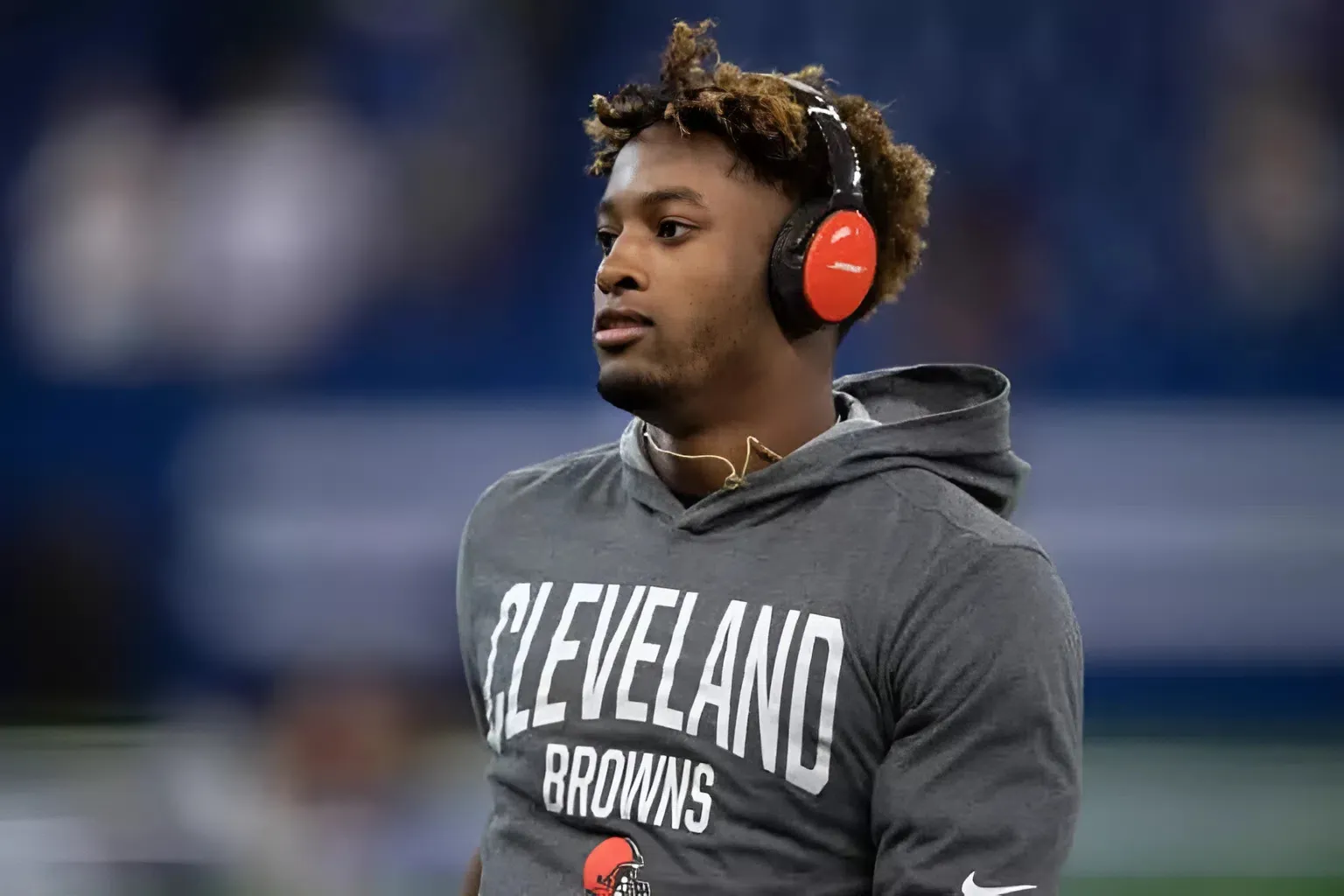Leon Draisaitl is set to become the NHL’s highest-paid player next season after signing an eight-year, $14 million per year contract extension with the Edmonton Oilers last summer. Still, as Zach Laing noted in an article recently, his reign as the NHL’s highest-paid player may be short.
Minnesota Wild forward Kirill Kaprizov is eligible for a contract extension this summer. As Laing noted, The Athletic’s Michael Russo joined Jason Gregor on The DFO Rundown to speculate on what Kaprizov’s new deal could look like:
“I think he’s definitely going to surpass Draisaitl, and not that Draisaitl is not the better player, but it’s one, it’s a different year, and two, it’s a different situation,” said Russo. “This is one franchise who has never had a superstar like Kaprizov. It is imperative that they get him done, and it’s not going to be for 14 (million).”
Kaprizov is highly skilled and due for a big payday — one that will likely surpass Draisaitl’s as the league’s highest-paid, as Russo mentioned, but if you polled 100 hockey fans on who they’d choose between the two for their team, chances are the majority would pick the Oilers’ centerman. But with that in mind, while Draisaitl is likely the better player than Kaprizov, it’s the offseason, and let’s have some fun and see how these two superstars measure up against each other.
Draisaitl was drafted third overall by the Oilers in 2014 and has put up 956 career points, having started his NHL career just before turning 19. The Wild drafted their Russian dynamo a year later in the fifth round, and he’s since totaled 389 regular-season points after entering the league a bit more seasoned at 23 years of age.
That said, both players are tied with a career points-per-game (PPG) average of 1.21; but, it’s impressive that Draisaitl has maintained that over almost twice the time as Kaprizov, spanning ten seasons compared to five.
Additionally, let’s take a look at their 5v5 play from last season. The Wild superstar’s most frequent 5v5 linemates were Marco Rossi (407:58) and Mats Zuccarello (348:10). Although Kaprizov’s regular season was cut short due to injury, in the 41 games he played, he recorded 31 points at 5v5, an average of 0.75 points per game at 5v5.
On the other hand, Draisaitl’s primary winger at 5v5 last season was Vasily Podkolzin (497:28), followed by Connor McDavid (406:42) and Viktor Arvidsson (394:37). In 71 games, Draisaitl produced 53 points at 5v5, matching Kaprizov’s 0.75 PPG average. While they tied in points-per-game production at 5v5 last season, some might argue that Draisaitl should’ve tallied more points playing alongside McDavid. However, another point could be made, that the Oilers centerman had Podkolzin (24 points) as his primary winger, who isn’t as offensively strong as Rossi (60 points) or Zuccarello (54 points), Kaprizov’s top linemates.

Draisaitl vs. Kaprizov: Who Has the Advantage in Skating and Shooting?
In terms of skating, according to NHL Edge data, Kaprizov’s top skating speed last season was clocked at 21.60 MPH, ranking below the NHL’s 50th percentile, while Draisaitl’s top speed was 23.20 MPH, placing him in the 92nd percentile league-wide. Also, the Russian forward recorded 49 speed bursts above 20 MPH last season, again ranking below the 50th percentile, while Draisaitl’s 202 bursts ranked in the 95th percentile. When it comes to who the faster skater is, the edge clearly goes to the Oilers’ centerman.
While Draisaitl has the upper hand when it comes to wheels, Kaprizov comes out ahead in shot power. Last season, the Novokuznetsk, Russia native’s fastest shot was recorded at 91.52 MPH, ranking in the 86th percentile in the NHL, compared to the German’s 87.42 MPH shot, which placed him in the 62nd percentile.
However, despite having a less powerful shot, Draisaitl is the more accurate shooter and has one of the best one-timers in the league. Last regular season, he had a shooting percentage of 21.7%, while Minnesota’s winger posted 17.2%. Over their careers, Draisaitl maintains the advantage with an 18.6% shooting percentage compared to Kaprizov’s 16.4%.
As well, Draisaitl has a goals-per-game ratio of 0.51 over his ten-season career, with his highest single-season goal total being 55, which he recorded during the 2021–22 season. Kaprizov, on the other hand, has a higher goals-per-game ratio of 0.58 and reached a career-high 47 goals, also during the 2021–22 season.
Offensively, Kaprizov may have the heavier shot and a slight advantage in goals per game, but Draisaitl is the quicker skater and the more accurate shooter.
Draisaitl Separates with His Value as a Two-Way Centerman
When comparing both players, it’s obvious they’re elite with similar point production, and both are excellent passers. But where the Oilers’ forward starts to separate himself is in the position they play — center versus left wing.
As a centerman, Draisaitl has far more responsibility than a winger. While Kaprizov dazzles as a dynamic winger with game-breaking skill, Draisaitl not only produces offence at an elite level but also takes on defensive duties, covering both ends of the ice while playing down the middle. He’s tasked with taking faceoffs (winning 54.3% of them last season) and being the first forward back to support his defencemen.
Moreover, there were instances during last playoffs in the second round against the Vegas Golden Knights where Draisaitl was used primarily in a shutdown role, alongside Podkolzin and Kasperi Kapanen. Together, they effectively shut down Jack Eichel — who recorded a career-high 94 points in the regular season — holding him to zero goals in the series. Additionally, NHL_sid wrote about it in more detail, saying:
“At 5-on-5, Eichel had most commonly matched up against Draisaitl, particularly in Games 4 and 5 where head coach Kris Knoblauch separated McDavid and Draisaitl. Eichel played over half of his TOI against Draisaitl, and in those minutes, Eichel was out-scored 5 to 2 and out-chanced (in terms of high-danger chances) 15 to 8.”
Overall, Draisaitl has shown significant growth in his two-way play, and his sixth-place finish in last season’s Selke Trophy voting — which is awarded annually to the NHL forward who best excels in the defensive aspects of the game — reflects that progress.
Additionally, the centerman played 30 more games in 2024-25 than Kaprizov and ended the season with a +32 plus/minus rating, while the Russian winger finished with an even 0. Defensively? Draisaitl earns the nod.
Draisaitl Ranks Among the Best Playoff Performers Ever
Another area where Draisaitl stands out — not just compared to Kaprizov, but among many players — is the level he elevates to in the playoffs. As mentioned, he averages 1.21 points per game in the regular season, but when the stakes are higher, he turns it up, having produced 141 points in 96 playoff games for a 1.47 PPG average, which ranks him fifth all-time among NHL players. Kaprizov, on the other hand, hasn’t had as many kicks at the can in the postseason as the Oiler, having played in just 25 playoff games and tallying 21 points.
On top of that, Draisaitl’s 33 points in 22 playoff games last postseason represent the 22nd highest playoff point total in NHL history. He’s also clutch — last playoffs, he scored four overtime goals, the most ever by a player in a single postseason.
Draisaitl also pulls ahead of Kaprizov when it comes to individual awards. As mentioned, Kaprizov made his NHL debut at 23 years old, recording 51 points in 55 games during the shortened 2020-21 season. That stellar work earned him the Calder Trophy as the league’s best rookie, the only NHL hardware he has won in five seasons.
That said, Draisaitl won his first-ever Rocket Richard Trophy last season by scoring the most goals (52). He also won the Art Ross Trophy, Ted Lindsay Trophy, and Hart Memorial Trophy for the 2019-2020 season. Of course, there’s often the argument that “he plays with McDavid.” But that season, when he won all that hardware, he made his case by looking most dominant when McDavid was out of the lineup, as the captain missed a total of 18 games due to injury that season.
All in all, it’s fun to compare both superstars — two elite players close in age with similar offensive flair. One is a better skater, the other has a harder shot, and although Kaprizov may one day take the title as the highest-paid player in the NHL, where Draisaitl comes out on top is that he’s not only a strong offensive producer but also a defensively responsible centerman. Also, when his career is finished, many moons from now, he’ll be remembered as one of the greatest playoff performers to ever play.

-1754876494-q80.webp)
-1754493864-q80.webp)
